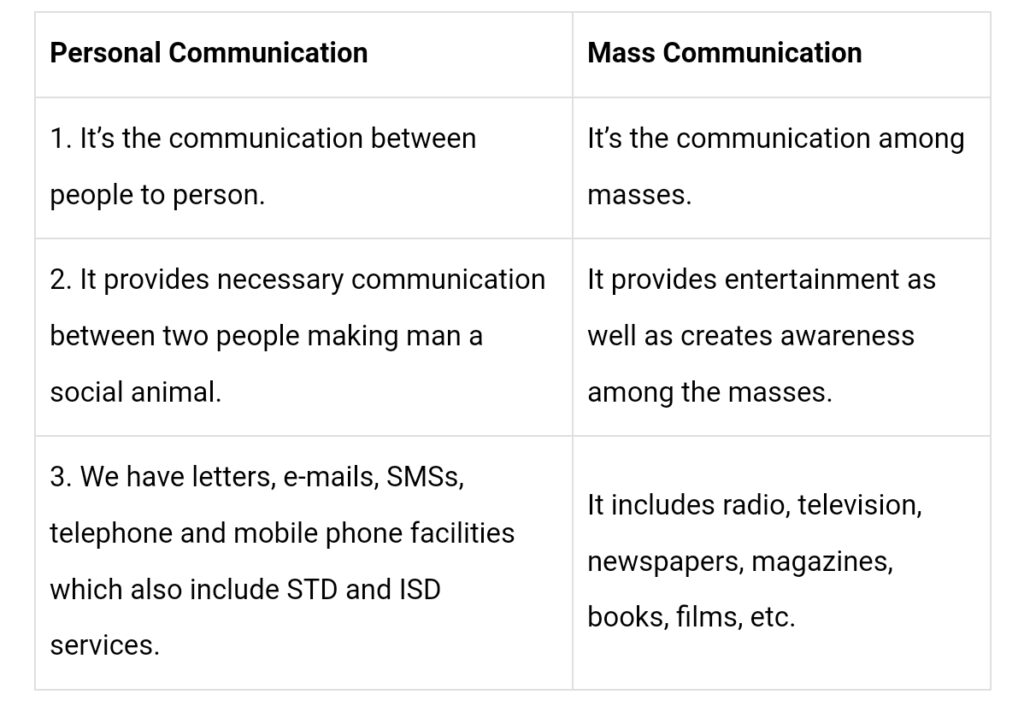We have provided you with Extra and Important Questions from Class 10 Social Science Geography Chapter 7 Lifelines of National Economy. This Extra and Important Questions will help you to score 100% in your Board Exams. These extra questions will be helpful to revise the important topics and concepts.
Join our Telegram Channel, there you will get various e-books for CBSE 2024 Boards exams for Class 9th, 10th, 11th, and 12th.
Table of Contents
Lifelines of National Economy Class 10 Important Questions with Answers Geography Chapter 7
Extra Questions for Class 10 Geography Chapter 7 Very Short Answer Type
Question: Why do we need transportation?
Answer: Goods and services do not move from their supply locations to demand locations on their own. The movement of these goods and services necessitates the need for transport.
Question: Name the southern terminal station of the ‘North-South Corridor.’ [CBSE Delhi 2017]
Answer: Kanyakumari
Question: Name the river which is related to ‘National Waterways’ No. 1. [CBSE Delhi 2017]
Answer: Ganga
Question: How is East-West Corridor connected?
Answer: East-West Corridor is connecting Silchar (Assam) in the East to Porbandar (Gujarat) in the west.
Question: What do you know about Golden Quadrilateral?
Answer: The government has launched a major road development project linking Delhi-Kolkata, Chennai, Mumbai and Delhi by six lane super highway. It is looked after by National Highway Authority of India.
Question: What do you know about National Highway 1?
Answer: The historical Sher Shah Suri Marg is called National Highway 1. It is located between Delhi and Amritsar.
Question: Which places are linked by National Highway 2 and 3?
Answer: National Highway 2 links Delhi to Kolkata and National Highway 3 links Gwalior to Jhansi.
Question:What do you know about National Highway 7?
Answer: National Highway 7 is the longest and traverses 2369 kms between Varanasi and Kanyakumari via Jabalpur, Nagpur, Hyderabad, Bangalore and Madurai.
Question: What does ‘Road Density’ mean?
Answer: The length of road per 100 sq. kms of area is known as density of roads.
Question: What is the status of road density in India?
Answer: Distribution of roads is not uniform in the country. Density of all roads varies from only 10 kms. In Jammu and Kashmir to 375 kms in Kerala with National Average of 75 km (1996-97).
Question: When was the first train in India launched?
Answer: The first train steamed off from Mumbai to Thane in 1853, covering a distance of 34 kms.
Question:What is the network of railways in northern plains?
Answer: The northern plains with their vast level land, high population density and rich agricultural resources provided the most favourable condition for their growth.
Question: What is the status of railways in hilly tracts?
Answer: In the hilly terrains of peninsular region, railway tracts are laid through low hills, gaps or tunnels.
Extra Questions for Class 10 Geography Chapter 7 Short Answer Type
Question: What is pipeline transportation? Write two merits and demerits of the same. [CBSE Sample Paper 2016]
Answer: Pipeline transport network is the new mode of transport these days. In the past, pipelines were used to transport water to cities and industries. Now, these are used for transporting crude oil, petroleum products and natural gas from oil and natural gas fields to refineries, fertilizer factories and big thermal power plants. Solids can also be transported through a pipeline when converted into slurry.
Merits:
- Useful in transporting liquids and solid slurry from far away locations.
- Subsequent running costs after laying down the network are minimal.
- It rules out trans-shipment losses or delays.
Demerits:
- Initial cost of laying pipelines is high.
- Pipelines can burst or can have leakage leading to wastage of valuable resource like water, mineral oil, etc.
Question: Differentiate between personal and mass communication.
Answer:

Question: What are the major objectives of these Super Highways?
Answer: The major objective of these Super Highways is to reduce the time and distance between mega cities of India. These projects have also helped in the economic development of the country. These highway projects are being implemented by the National Highway Authority of India (NHAI).
Question: What is the strategic importance of New Mangalore and Kochi ports?
Answer: (i) New Mangalore: This port is located in Karnataka and caters to the export of iron ore concentrates from Kudremukh mines.
(ii) Kochi: Kochi is the extreme South-Western port, located at the entrance of a lagoon with a natural harbour. This port is having the biggest ship building yard.
Question: What kind of port is Port of Tuticorin?
Answer: Moving along the east coast, we can see the extreme South Eastern Port of Tuticorin. This port has a natural harbour and rich hinterland. It has a flourishing trade handlings of a large variety of cargoes to even our neighbouring countries like Sri Lanka, Maldives, etc. and the coastal regions of India.
Question: What is India’s status in the making of feature films?
Answer: India is the largest producer of feature films in the world. It produces short films, video feature films and video short films. The Central Board of Film Certification is the authority to certify both Indian and foreign films.
Question: What commodities are exported by India?
Answer: Commodities exported from India are: agriculture and allied products, ores and minerals, gems and jewellery, chemical and allied products, engineering goods and petroleum products. India has emerged as a ‘software giant’ at the international level and it is earning foreign exchange through the export of information technology.
Question: Why do the movement of goods and services from one place to another require fast and efficient means of transport? Explain with examples. [CBSE Delhi 2017]
Answer: Requirement of efficient means of transport:
(i) We use different materials and services in our daily life. Some of these are available in our immediate surroundings, while other requirements are met by bringing things from other places.
(ii) Goods and services do not move from supply locales to demand locales on their own. The movement of these goods and services from their supply locations to demand locations necessitates the need for transport.
(iii) The products come to the consumers by transportation.
(iv) The pace of development of a country depends upon the production of goods and services as well as their movement over space.
Question: Why is air travel more popular in the North-Eastern states of India? Explain. [CBSE (F) 2016]
Answer: Air travel is more popular in the north eastern states of India because:
(i) The north-eastern part of the country is marked with the presence of big rivers, dissected relief and dense forests hence, it is difficult to construct roads and railway lines there.
(ii) There are frequent floods and international frontiers, which require immediate and quick attention from the government authorities. Floods also damage roads and railway lines.
(iii) Air travel has made access to north-eastern part of the country easier and quicker.
Question: ‘‘The advancement of international trade of a country is an index of its economic development.’’ Justify the statement. [CBSE (AI) 2017]
Answer: ‘The advancement of international trade of a country is an index of its economic development:
- It is considered as the economic barometer of a country.
- As the resources are space bound, no country can survive without international trade.
- A favourable balance of trade of a country indicates economic development.
- International trade helps in exchange of surplus goods with those of deficit countries.
- Exchange of commodities and goods have been superseded by the exchange of information and knowledge.
Question: What are the three important networks of pipeline transportation?
Answer:
- From oilfield in upper Assam to Kanpur via Guwahati, Barauni and Allahabad.
- From Salaya in Gujarat to Jalandhar in Punjab via Viramgam, Mathura, Delhi and Sonipat.
- Gas pipeline from Hazira in Gujarat connects Jagdishpur in Uttar Pradesh via Vijaipur in Madhya Pradesh.
Extra Questions for Class 10 Geography Chapter 7 Long Answer Type
Question: Examine with example the role of means of transport and communication in making our life prosperous and comfortable. [CBSE (AI) 2017]
Answer: Efficient means of transport are pre requisites for fast development. Role of means of transport and communication are:
- Today the world has been converted into a large village with the help of efficient and fast moving transport.
- We can proudly say that India is well linked with the rest of the world despite its large size.
- Railways, Airways, Waterways, Newspapers, Radio, Television, Cinema and Internet etc have been contributing to the socio-economic progress in many ways.
- The trades from local to international levels have added to the vitality of its economy.It has enriched our lives and added substantially to growth and comfort.
Question: What are the various means of mass communication used in India?
Answer:
- It includes radio, television, newspapers, magazines, books and films.
- All India Radio broadcasts a variety of programmes in national, regional or local languages.
- Doordarshan, the national television channel of India broadcasts a variety of programmes ranging from entertainment, education to sports, etc.
- India publishes a large number of newspapers and periodicals annually.
- Newspapers are published in about 100 languages and dialects.
- India is the largest producer of feature films in the world. It produces short films, video feature films and video short films.
Question: State any four merits of railways.
Answer:
- Railways is the principal mode of transportation for freight and passengers in India.
- Railways also makes it possible to conduct a number of activities like business, sightseeing, pilgrimage along with transportation of goods over long distances.
- Apart from being a means of transport, the Indian railways has been a great integrating force for more than 150 years.
- Railways in India binds the economic life of the country by developing industry and agriculture through transportation. The Indian railways is the largest public sector undertaking in India.
Question: Classify roads of India on the basis of their capacity.
Answer: (i) Golden Quadrilateral Super Highways: These projects are implemented by the National Highway Authority of India (NHAI). There are three major Super Highways. Golden Quadrilateral starts from Delhi, moves to Mumbai, Chennai, Kolkata and back to Delhi. The North-South Corridor starts from Srinagar to Kanyakumari. The East-West Corridor connects Silchar to Porbandar.
(ii) National Highways: These roads are laid and maintained by Central Public Works Department (CPWD). A number of major National Highways run in North-South and East-West directions, e.g., Sher Shah Suri Marg is called National Highway No. 1.
(iii) State Highways: Roads linking a state capital with different district headquarters are known as state highways. These roads are constructed and maintained by States and Union Territories.
(iv) District Roads: These roads connect the district headquarters with other places of the district. These roads are maintained by the Zila Parishad.
(v) Rural Roads: These roads link rural areas and villages with towns. These roads are constructed under the Pradhan Mantri Grameen Sadak Yojana.
Question: What do you know about Kandla Port?
Answer: Kandla in Kachchh was the first port developed soon after Independence to ease the volume of trade on the Mumbai port. It is the only important port of Gujarat as after partition, the Karachi port had become a part of Pakistan. It is a tidal port. It caters to the convenient handling of exports and imports of highly productive granary and industrial belt stretching across the states of Jammu & Kashmir, Himachal Pradesh, Punjab, Haryana, Rajasthan and Gujarat.
Question: What is the contribution of Mumbai and Goa ports in the economy of India?
Answer: Mumbai is the biggest port with a spacious, natural and well-sheltered harbor. The Jawaharlal Nehru port was planned with a view to decongest the Mumbai port and serve as a hub port for this region. Marmagao port of Goa is the premier iron ore exporting port of the country. This port accounts for about fifty per cent of India’s iron ore export.
Question: Define the term ‘tourism’. Why is tourism known as a trade? Explain. [CBSE (F) 2016]
Answer: The definition of tourism is “The cultural, recreational and commercial visits to places of interest in a country is known as tourism”
Tourism is known as trade because:
- Foreign tourist arrivals in the country contributing `64,889/- crore of foreign exchange in 2010.
- More than 15 million people are directly engaged in the tourism industry
- Tourism provides support to local handicrafts.
- Foreign tourists visit India for medical tourism and business tourism.
- Helps in the growth of national income and integrity.



